
Sarah
There are an estimated 403,000 people living in modern slavery in the United States (GSI 2018). Sex trafficking exists throughout the country. Traffickers use violence, threats, lies, debt bondage and other forms of coercion to compel adults and children to engage in commercial sex acts against their will. The situations that sex trafficking victims face vary, many victims become romantically involved with someone who then forces them into prostitution. Others are lured with false promises of a job, and some are forced to sell sex by members of their own families. Victims of sex trafficking include both foreign nationals and US citizens, with women making up the majority of those trafficked for the purposes of commercial sexual exploitation. In 2015, the most reported venues/industries for sex trafficking included commercial-front brothels, hotel/motel-based trafficking, online advertisements with unknown locations, residential brothels, and street-based sex trafficking. Sarah grew up in California. Her cousin was the leader of a gang and its members were often guarding the house. One of the gang members abused Sarah as a child and when her cousin found out, he was forced to retaliate, and Sarah now owed him. After this incident, she became a source of income and was put to work trafficking drugs. One day, her cousin bought her new dresses, took photos of her to sell to older men. When Sarah tried to seek help at school, she was locked up for a week as punishment. Later, when she was seventeen, Sarah’s cousin was arrested and though she was free from his control, she had nowhere to go and she was soon trafficked again by an old friend into adult entertainment. When she was 23, Sarah stole her second trafficker’s car keys and escaped. After living a life of abuse, trafficking, and drug abuse, Sarah struggled to go about ‘normal life.’ She talks about her journey overcoming her trauma and moving forward.
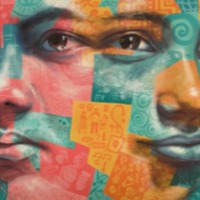
Ani R.
There are an estimated 61,000 people living in modern slavery in Saudi Arabia (GSI 2018). It is a source and destination country for men and women trafficked from South and South East Asia and Africa. People voluntarily migrate to the country to work in a variety of sectors including construction and domestic service; many of these workers are vulnerable to forced labour. Traffickers and brokers often illegally recruit migrants to work in Saudi Arabia and subsequently forced them into domestic servitude or debt bondage. Female domestic workers are particularly at risk of trafficking due to their isolation inside private residences. Non-payment or late payment of wages remains a complaint from foreign workers, while employer's withholding of worker's passports remains a significant problem. Trafficking perpetrators include businesses of all sizes, private families, recruitment companies in both Saudi Arabia and labor-sending countries, and organized criminal elements. A Saudi man, an Indonesian labour agent, and an Indonesian migrant worker deceived Ani R. into believing she was migrating for marriage. At 17 years old, she married the man to help her family but the dowery promised was not given to Ani R.’s father. While Ani was treated well the first month in Saudi Arabia, after this she was subjected to physical abuse and treated as a domestic worker forced to work long hours in the house under the threat of violence. Ani R., tried to escape but her husband found her at a shelter and bribed police to have her return.
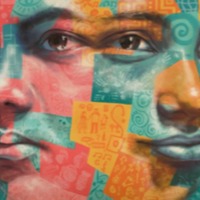
Marcela Loaiza (Narrative 2)
There are an estimated 37,000 people living in modern slavery in Japan (GSI 2018). The country is the destination for men, women and children trafficked for forced labour and commercial sexual exploitation. The majority of trafficking victims are foreign women who migrate willingly seeking work but find themselves trapped in debt bondage, having to work in domestic and sex work to pay off fees incurred. Despite warning from the U.N., it is reported that human trafficking is on the rise in Japan. Marcela Loaiza was 21 years old when she was lured from Colombia, trapped in a sex trafficking ring, and forced by Japan’s Yakuza mafia to sell sex on the streets of Tokyo. After 18 months of sexual exploitation, she escaped, so ill that her hair and teeth were falling out. Today Loaiza, 35, runs a non-governmental organisation that bears her name to raise awareness about human trafficking among girls, women and men in Colombia and the United States, where she now lives. Loaiza spoke with Thomson Reuters Foundation by telephone from the Colombian city of Cali and recalled how she escaped forced prostitution and the mafia, and how she moved past the pain and guilt and healed.
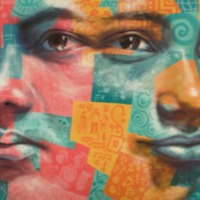
Leann
There are an estimated 17,000 people living in conditions of slavery in Canada (GSI 2018). Both Canadian and foreign citizens are exploited in forced labour and sex trafficking. Forced labour affects migrant workers under ‘low-skilled’ temporary visa streams including the low-wage and primary agricultural streams. These workers are often in restaurants, hotels, agriculture, food preparation, construction or domestic work. Sexual exploitation of Canadian citizens is the most common form of slavery detected by authorities in the country, with 93% of sex trafficking victims being Canadian. Leann developed an addiction issue after a serious industry left her in a wheelchair. She borrowed money to feed her addiction that resulted in her owing money to her traffickers, who forced her into forced criminal activity to pay off her debt. Leanna was forced to open bank accounts, assume fake identities and have multiple IDs to get money for her traffickers. Though she was arrested on a number of occasions, her traffickers were always waiting for her outside jail when she was released. This cycle continued for three years until her traffickers suspected she had stolen from them and locked her in a room where she was sexual and physical abused. She was finally able to escape when one day someone left the door open and she was helped by a passerby.
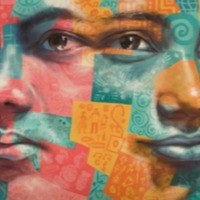
Shannon
There are an estimated 403,000 people living in modern slavery in the United States (GSI 2018). Sex trafficking exists throughout the country. Traffickers use violence, threats, lies, debt bondage and other forms of coercion to compel adults and children to engage in commercial sex acts against their will. The situations that sex trafficking victims face vary, many victims become romantically involved with someone who then forces them into prostitution. Others are lured with false promises of a job, and some are forced to sell sex by members of their own families. Victims of sex trafficking include both foreign nationals and US citizens, with women making up the majority of those trafficked for the purposes of commercial sexual exploitation. In 2015, the most reported venues/industries for sex trafficking included commercial-front brothels, hotel/motel-based trafficking, online advertisements with unknown locations, residential brothels, and street-based sex trafficking. Shannon was trafficked into forced prostitution in the state of Nebraska. Here she tells of her experience of PTSD long after being rescued from her situation and stresses the central role of therapy in the road to recovery. Shannon underlines the importance of differentiating between those who choose prostitution and those who are trafficked into prostitution for commercial sexual exploitation.
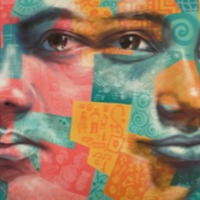
Brooke Axtell
There are an estimated 403,000 people living in modern slavery in the United States (GSI 2018). Sex trafficking exists throughout the country. Traffickers use violence, threats, lies, debt bondage and other forms of coercion to compel adults and children to engage in commercial sex acts against their will. The situations that sex trafficking victims face vary, many victims become romantically involved with someone who then forces them into prostitution. Others are lured with false promises of a job, and some are forced to sell sex by members of their own families. Victims of sex trafficking include both foreign nationals and US citizens, with women making up the majority of those trafficked for the purposes of commercial sexual exploitation. In 2015, the most reported venues/industries for sex trafficking included commercial-front brothels, hotel/motel-based trafficking, online advertisements with unknown locations, residential brothels, and street-based sex trafficking. Brooke Axtell was seven years old when she was trafficked for sex by her nanny. Her mother was in hospital and her father travelled for work. She was taken to houses and hotels and sold to strange men. She was forced into pornography with adults and other children. The trafficking finally ended when her mum came out of hospital and fired the nanny, but Brooke’s trauma followed her into adulthood.
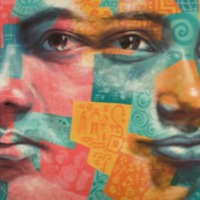
Witness A
There are an estimated 136,000 people living on conditions of modern slavery in the United Kingdom (Global Slavery Index 2018). According to the 2017 annual figures provided by the National Crime Agency, 5, 145 potential victims of modern slavery were referred through the National Referral Mechanism in 2017, of whom 2,454 were female, 2688 were male and 3 were transgender, with 41% of all referrals being children at the time of exploitation. People are subjected to slavery in the UK in the form of domestic servitude, labour exploitation, organ harvesting and sexual exploitation, with the largest number of potential victims originating from Albania, China, Vietnam and Nigeria. This data however does not consider the unknown numbers of victims that are not reported. Witness A was trafficked for commercial sexual exploitation in the UK as a minor. Witness A tells of the numerous organisations and agencies who failed to recognise that she had been trafficked, resulting in her continued exploitation. Subjected to sexual and physical violence, Witness A often found herself in contact with A&E, the police and child services who did not help her escape her exploiters and, on occasion, placed the blame upon herself. Witness A states that it was not until she reached out to the Salvation Army that she was able to escape her exploitation and was placed in a safehouse. However, Witness A talks about the lack of support available even after she was rescued from her traffickers.
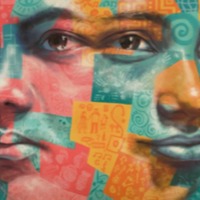
James Kofi Anan
There are an estimated 133,000 people living in modern slavery in Ghana (GSI 2018). Ghana remains a source, transit, and destination country for men, women, and children subjected to forced labor and sex trafficking. Ghanaian boys and girls are subjected to forced labor within the country in fishing, domestic service, street hawking, begging, portering, artisanal gold mining, quarrying, herding, and agriculture, including cocoa. Research focused on the fishing industry on Lake Volta indicated that more than half of the children working on and around the lake were born in other communities and many of these children are subjected to forced labor; not allowed to attend school; given inadequate housing and clothing; and are controlled by fishermen through intimidation, violence, and limiting access to food. Boys as young as five years old are forced to work in hazardous conditions, including deep diving, and many suffer waterborne infections. A study of the prevalence of child trafficking in selected communities in the Volta and Central Regions indicated that children from nearly one-third of the 1,621 households surveyed had been subjected to trafficking, primarily in fishing and domestic servitude. James Kofi Anan tells of his own experience of child trafficking for fishing on Lake Volta, Ghana. He talks about how this representative of child trafficking in the area and how he thinks people can work towards the ending of human trafficking. Kofi Anan also provides details on his own anti-child trafficking organisation Challenging Heights.
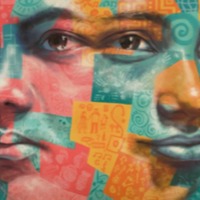
TN
TN, a 31-year-old woman from Ponorogo (2011- ), told Amnesty International she was physically abused by her employer who then dismissed her after three months on the pretext of theft.
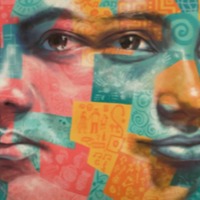
Katrina
There are an estimated 403,000 people living in modern slavery in the United States (GSI 2018). Sex trafficking exists throughout the country. Traffickers use violence, threats, lies, debt bondage and other forms of coercion to compel adults and children to engage in commercial sex acts against their will. The situations that sex trafficking victims face vary, many victims become romantically involved with someone who then forces them into prostitution. Others are lured with false promises of a job, and some are forced to sell sex by members of their own families. Victims of sex trafficking include both foreign nationals and US citizens, with women making up the majority of those trafficked for the purposes of commercial sexual exploitation. In 2015, the most reported venues/industries for sex trafficking included commercial-front brothels, hotel/motel-based trafficking, online advertisements with unknown locations, residential brothels, and street-based sex trafficking. Katrina Owens, sex trafficking survivor and peer advocate for sexually exploited children, gives her perspective on the commercial sexual exploitation of children (CSEC), how she got out, and what the public should know about the young victims of commercial sexual exploitation.
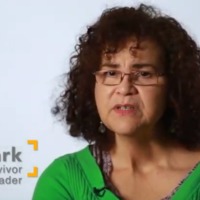
Dee Clark
There are an estimated 403,000 people living in modern slavery in the United States (GSI 2018). Sex trafficking exists throughout the country. Traffickers use violence, threats, lies, debt bondage and other forms of coercion to compel adults and children to engage in commercial sex acts against their will. The situations that sex trafficking victims face vary, many victims become romantically involved with someone who then forces them into prostitution. Others are lured with false promises of a job, and some are forced to sell sex by members of their own families. Victims of sex trafficking include both foreign nationals and US citizens, with women making up the majority of those trafficked for the purposes of commercial sexual exploitation. In 2015, the most reported venues/industries for sex trafficking included commercial-front brothels, hotel/motel-based trafficking, online advertisements with unknown locations, residential brothels, and street-based sex trafficking. Dee was in and out of foster care as a child. At the age of 12 she was taken to a party where a man invited her back to his apartment. Once there, Dee was taken to a pimp named Red and subjected to commercial sexual exploitation. She was arrested for prostitution at 13 years old. Dee talks about the hardship of recovery and finding support after escaping the life and now works to support other survivors of sex trafficking.

Duyen
The Global Slavery Index 2018 estimates that on any given day in 2016 there were over 3.8 million people living in conditions of modern slavery in China. Included in the types of slavery prevalent in China is forced labour, with China's unprecedented rise to the world's second largest economy and its domestic economy specialising in the production of labour-intensive, cheap goods for export, increasing the demand for cheap labour. Forced labour occurs in both the manufacturing and construction sectors, as well as more informal industries such as brick kilns and garment facoties. Many women are also tricked in to forced labour as domestic servants, lured by the promise of good jobs with high incomes they instead find themselves confined to the house and forced to work long hours with little or no pay.Duyan was told she would just be visiting China when she was sold to a Chinese family to be their made. Duyan was finally able to escape and reported her trafficker to the police.
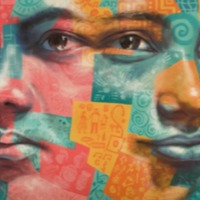
Borey
There are an estimated 610,000 people living in conditions of modern slavery in Thailand (GSI 2018). Men, women and children are victims of human trafficking for forced labour in the Thai fishing industry, subjected to physical abuse, excessive and inhumane working hours, sleep and food deprivation, forced use of methamphetamines and long trips at sea confined to the vessel. Due to the fishing industry relying on trans-shipments at sea to reduce expenditure, some find themselves trapped on long-haul trawlers for years at a time. This makes the monitoring of enslaves labour on fishing vessels costly and difficult. Borey was trafficked from Cambodia on to a Thai fishing vessel. Though he has now escaped conditions of slavery, Borey still suffers mental health issues from his trauma.
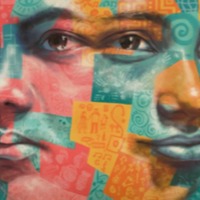
Atiya Z
The Global Slavery Index has estimated that there are almost 3 million people living in conditions of modern slavery in the region of the Middle East and North Africa. Oman is a transit and destination country for men and women primarily from India, Pakistan, Bangladesh and the Philippines, most of whom migrate willingly as domestic servants or low-skilled workers in the country’s construction, agriculture and service sectors. Trafficked persons subsequently experience conditions of modern slavery such as the confiscation of passports, restrictions on movement, non-payment of wages, long working hours without rest and physical or sexual abuse. Atiya Z.,” 28, from Kondowa, travelled to Oman in June 2015. Her employer confiscated her passport and phone, forced her to work 21 hours a day with no rest and no day off, did not allow her to eat food without permission, and beat her every day. She attempted to flee after three weeks, but her employer brought her back and told her she had to pay back the money they had paid for her. Atiya called her agent in Oman for help, but the agent said it was her employer’s decision. After this incident, Atiya said her employer confined her to the house. In April 2016, she fainted because she could not eat due to a swollen throat. When they returned from the hospital, her employers beat and raped her in retaliation.
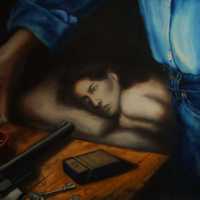
Suzzan Blac
The UK National Crime Agency estimates 3,309 potential victims of human trafficking came into contact with the State or an NGO in 2014. The latest government statistics derived from the UK National Referral Mechanism in 2014 reveal 2,340 potential victims of trafficking from 96 countries of origin, of whom 61 percent were female and 29 percent were children. Of those identified through the NRM, the majority were adults classified as victims of sexual exploitation followed by adults exploited in the domestic service sector and other types of labour exploitation. While a number of victims are trafficked from other countries such as Albania, Romania and Nigeria into the UK, UK residents are also vulnerable to commercial sexual exploitation. Suzzan Blac was born in 1960 in Birmingham to a dysfunctional family in which she experienced physical, emotional and sexual abuse. In 1976 she travelled to London for what she thought was a job interview, after meeting with her employer and having her mother sign a contract and consent form Suzzan thought she would begin a new life in London. However, she was taken to an old hotel building, raped by her employer and multiple other men before being forced, along with other young girls, to perform sexually in front of both a video and still camera. Subjected daily to threats, beatings and rape, Suzzan learned how to numb her mind. At the age of 16 Suzzan was able to escape from her traffickers with the help of one of the men involved in the trafficking ring. However, while she may have been physically free, she felt her mind was still trapped. At the age of 18 filled with guilt, shame and self-blame she sought medical help but was not given the support she needed by doctors who either gave her drugs to numb her feelings or abused her further. It wasn’t until the birth of her daughter at the age of 28 that Suzzan says she began to recognise her past abuse and the understanding of true motherhood. During the years 2000-2004 she was compelled to paint 42 images about her abuse in order to help process her pain and trauma into something tangible. Suzzan did not reveal these paintings for a further 10 years, finally deciding in 2011 that being a survivor was not enough, she wanted to be a voice for other survivors. Suzzan’s work is now exhibited around the world and she continues to be a voice for survivors, using her blog on The Violence of Pornography and her art in seminars to train social workers on child sexual abuse and trafficking.